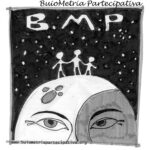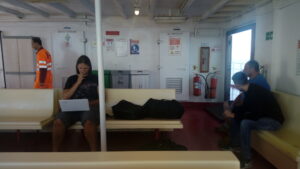[This article is part of the “Capraia Night Sky Symposium, reloaded” series – check this introduction to learn more]
S.J. Ribas (1) , J. Vilajoli (2)
1 – Parc Astronòmic Montsec, Consell Comarcal de la Noguera,
Camí del coll d’Ares s/n E25691 Àger, Lleida, Spain
sjribas@montsec.cat
2 – Consell Comarcal de la Noguera, C. Angel Guimera 28-30
E25600 Balaguer, Lleida, Spain
jvilajoliu@ccnoguera.cat
La serra del Montsec és una serra calcaria de més de 40 kilòmetres de longitud a les comunitats autònomes de Catalunya i Aragó al nord-est de la Península Ibèrica. La part catalana inclou al voltant de 20 municipis a les comarques del Pallars Jussà i la Noguera.
Aquesta área mostra uns paràmetres excel·lents pel desenvolpumant d’activitats al voltant de l’astronomia i els cels foscos. Per aquest motiu el Govern de Catalunya va promoure la creació i desenvolupament del Parc Astronòmic Montsec com una eina per ajudar al desenvolupament econòmic de la regió. Aquest impuls va donar una oportunitat per aturar la pèrdua de població i la creacio i millora de noves infrastructures turístiques vinculades al cel fosc i a les activitats astronòmiques.
L’any 2013 més de 1700 km2 van ser declarats com Destinació Turística Starlight i una part d’aquesta àrea va ser també Reserva Starlight gràcies als seus fantàstics paràmetres de cel nocturn i a les accions dutes a termes en el teriirotri per a preservar-lo.
Des del 2012 es van realitzar els primers anàlisi d’impacte econòmic i social, per exemple els resultats mostrats pel procés d’evaluació i diagnosi pel disseny del ‘Pla de Desenvolupament Sostenible del Turisme Montsec 2020’ [SomMontsec 2012]. L’any 2014 un nou estudi es va realitzat sobre els visitants del Parc Astronòmic Montsec i com contribueixen en l’economia local i en les activitats alternatives a l’àrea del Montsec. Aquest estudi del 2014 es va resvisar l’any 2017 amb les noves dades de visitants i paràmetres econòmics actualitzats.
Aquests estudis ens mostren importants resultats sobre la millora de l’àrea del Montsec. Per exemple el nombre d’allotjaments s’ha doblat en un dècada, l’aturada de la pèrdua de població a l’àrea o l’estimació d’uns 2 milions d’euros d’activitat econòmica generada al territori pels visitants del Parc Astronòmic Montsec.
Paraules clau:
contaminació lumínica, economia, astroturisme
Traduzione di S. Ribas
 Montsec is a calcareous mountain range more than 40 kilometres long in the regions of Catalunya and Aragon in the north-east of the Iberian Peninsula. The Catalonian part includes around 20 municipalities in the counties of Pallars Jussà and La Noguera.
Montsec is a calcareous mountain range more than 40 kilometres long in the regions of Catalunya and Aragon in the north-east of the Iberian Peninsula. The Catalonian part includes around 20 municipalities in the counties of Pallars Jussà and La Noguera.

 An advanced model for coastal light pollution
An advanced model for coastal light pollution
